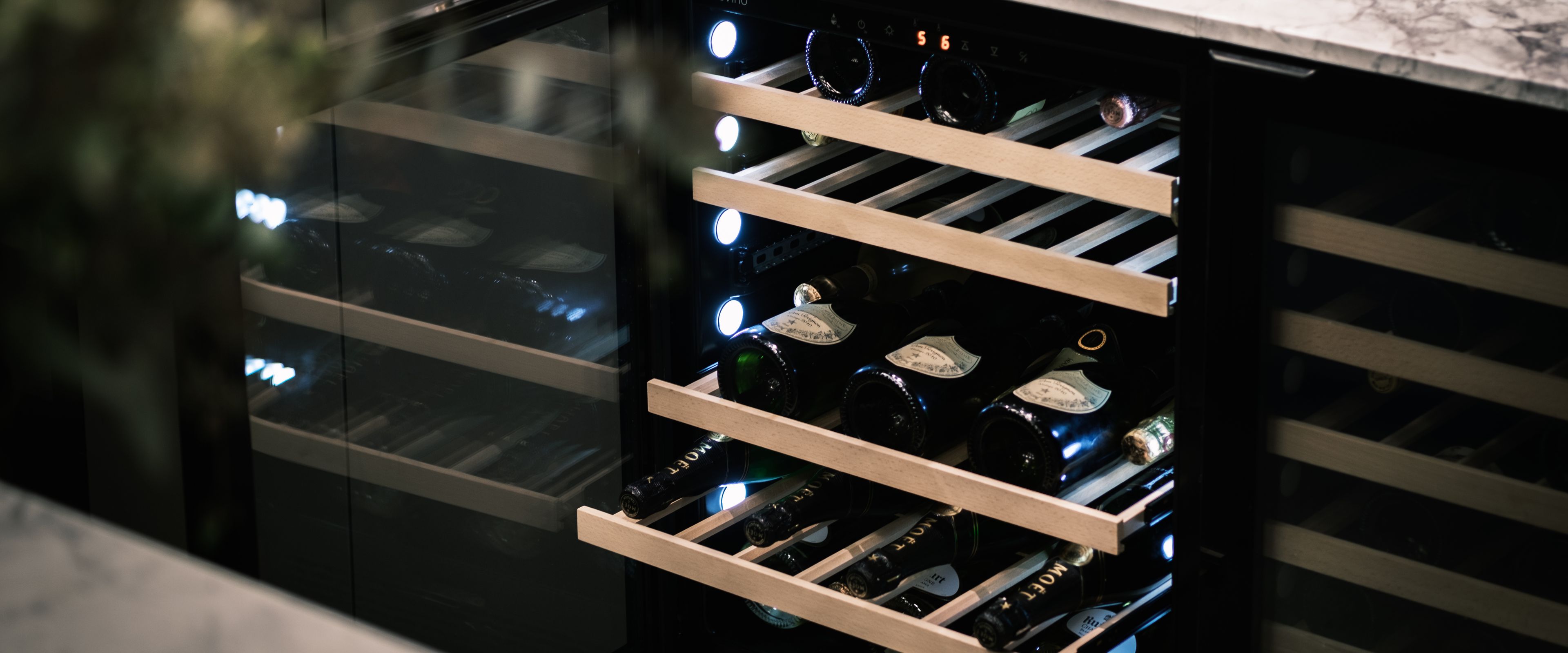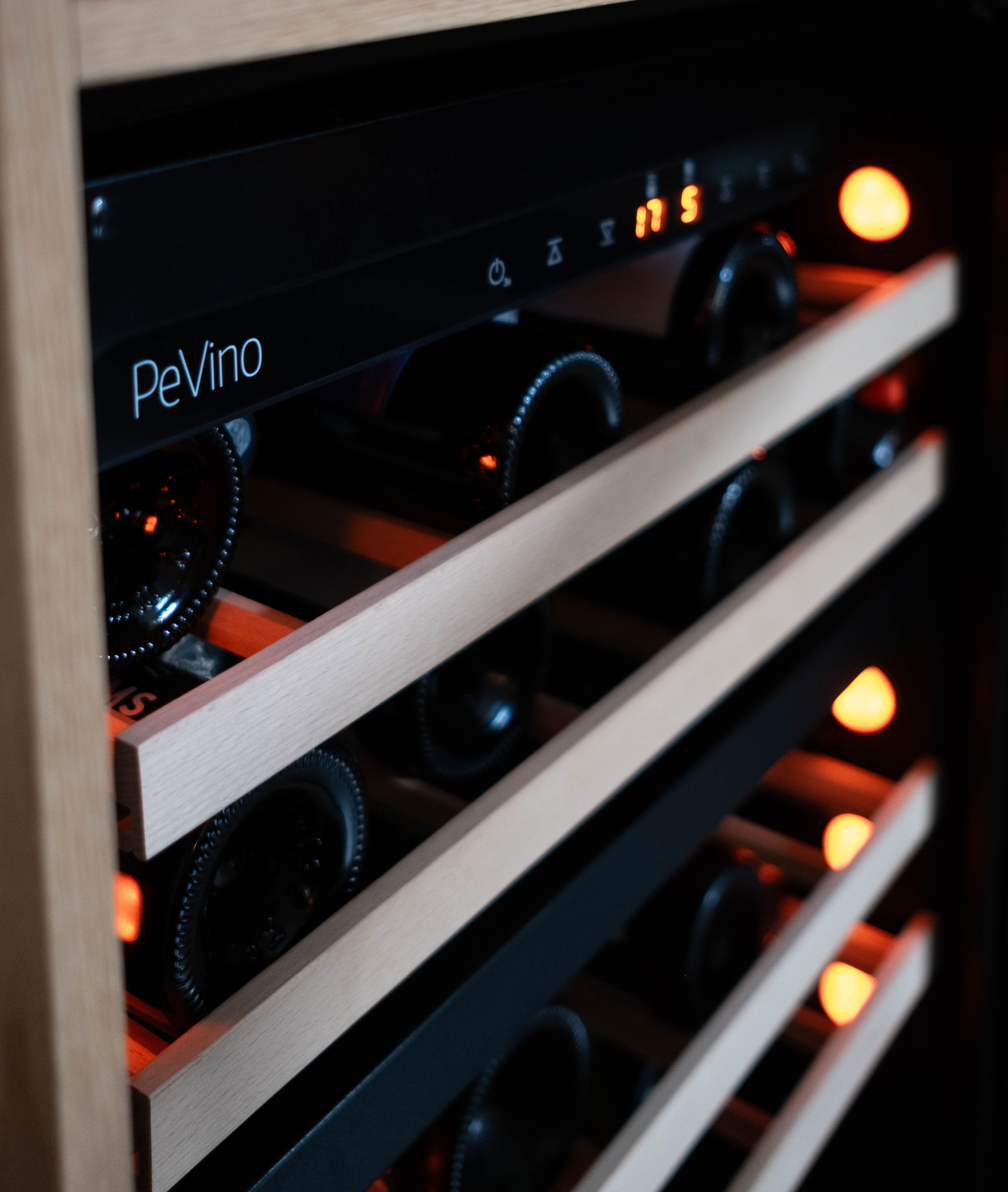
Guides
What is the cost of running a wine cooler in electricity?
What is the cost of running a wine cooler in electricity?
Rising energy prices are a hot topic these days, but how much does it actually cost to run a wine cooler? What affects energy consumption, and is there anything you can do to minimize it?

Energy labeling – a good place to start
The technological developments in recent years have allowed wine cooler manufacturers to gradually reduce energy consumption (and thereby also your electricity bill). However, you can’t avoid the fact that a wine cooler consumes electricity. How much it consumes depends on several factors, but let’s start by looking at where you can find information about consumption.
What do the new energy labels mean?
All wine coolers come with an energy label that shows their annual energy consumption in kWh. As of March 1, 2021, the EU introduced new and updated energy labels designed to make it easier for consumers to choose the most energy-efficient oven, dryer – or perhaps most importantly – wine cooler!
What’s new?
Both the old and the new EU schemes classify products on a scale from G to A, with A being the most energy-efficient. Due to technological progress, previous labels included classes A+, A++, and A+++, making the scale somewhat unclear. The new energy labeling system removes these "plus" categories and instead tightens the criteria for achieving class A. A product that was previously classified as A may now be rated as E, F, or G.
What are your needs?
Dit elforbrug kommer selvsagt meget an på, hvilket vinkøleskab du vælger. Nu hvor vi har fået en bedre forståelse for den nye energimærkning, kan vi tage et kig på, hvordan dit behov ser ud. En god fingeregel er, at jo større, jo flere kølezoner og features dit vinkøleskab har, jo større elforbrug må man forvente.
Herunder har vi opstillet en række spørgsmål, der har til formål at hjælpe dig med at vælge en opbevaringsløsning, der passer til lige netop dine behov.

How many cooling zones do you need?
When looking for the best wine cooler for your needs, consider how many cooling zones you require.
If you plan to use the wine cooler for aging and long-term storage, a single-zone wine cooler may be the best choice. Most wines mature optimally at a stable temperature of 12-14°C, whether it’s red wine, white wine, sparkling wine, or dessert wine. However, if you want to keep wines ready to serve for yourself and your guests, it could be smart to choose a dual-zone wine cooler. In a dual-zone cooler, you can set one zone to be colder than the other, allowing you to store white and sparkling wines at 6-8°C while keeping red wines at 14-16°C in the other zone.
From an energy consumption perspective, a single-zone wine cooler typically uses less electricity than a dual-zone cooler. This is because the single-zone cooler does not need to maintain multiple temperatures simultaneously and usually only has one compressor.

Should it be integrated, freestanding, or built-in?
Where you place your wine cooler can also affect its energy consumption, so it’s worth considering the location.
A freestanding wine cooler draws in and expels air from the sides and back, so it should not be enclosed.
A built-in or integrated wine cooler draws in and expels air from the front but has different functionalities depending on its placement.
The easier it is for the wine cooler to release heat from the back or sides, the less it has to work to maintain the desired temperature. To reduce energy consumption, avoid placing the wine cooler on heated floors or next to a radiator.

How many bottles do you need to store?
It’s almost self-explanatory that a larger wine cooler will use more electricity than a smaller one. Therefore, it’s important to consider how many bottles you actually need to store.
At Wineandbarrels, we have a large selection of wine coolers in various sizes to fit the number of bottles you wish to store.